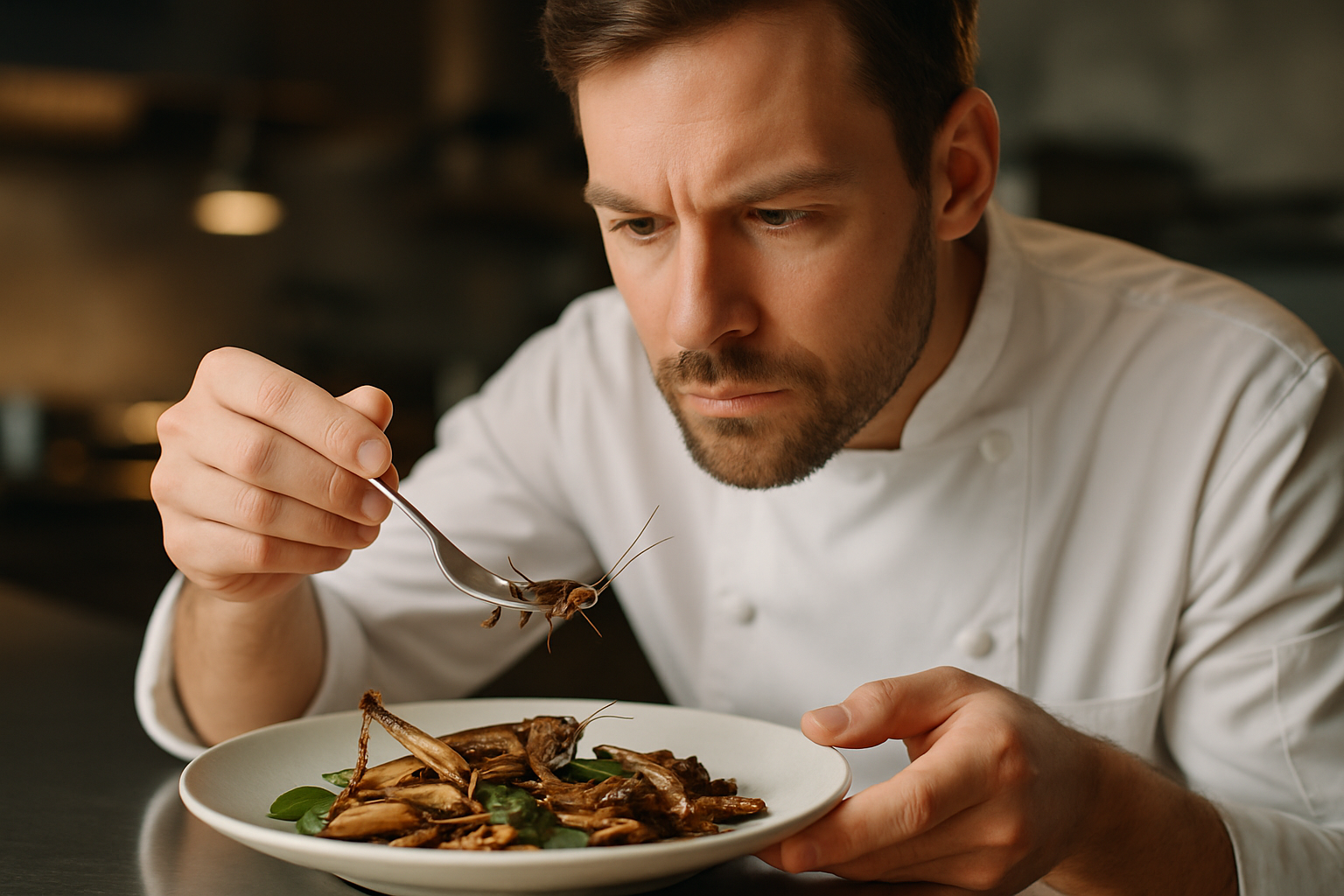Edible Insects: The Future of Sustainable Protein
Crunchy crickets, zesty mealworms, and savory silkworms – welcome to the world of entomophagy! As global populations soar and traditional protein sources strain our planet, insects are emerging as a nutritious, eco-friendly alternative. Join us on a journey through this fascinating culinary frontier that's set to revolutionize our plates and palates.

Nutritional Powerhouses in Tiny Packages
Insects pack a powerful nutritional punch that rivals, and often surpasses, traditional protein sources. Crickets, for instance, contain up to 69% protein by dry weight, compared to about 31% for chicken and 29% for beef. But it’s not just about protein – insects are also rich in essential amino acids, healthy fats, fiber, and micronutrients. Mealworms, for example, are an excellent source of zinc, iron, and vitamin B12. Silkworm pupae are rich in iron and calcium, while black soldier fly larvae boast high levels of lauric acid, known for its antimicrobial properties. This nutritional density makes insects an attractive option for addressing global malnutrition and providing complete nutrition in a compact form. As we delve deeper into the nutritional profiles of various insect species, we’re uncovering a treasure trove of health benefits that could revolutionize our approach to balanced diets.
Sustainability: The Environmental Edge of Insect Farming
In an era of climate change and resource scarcity, insect farming emerges as a beacon of sustainability. Compared to traditional livestock, insects require significantly less land, water, and feed to produce the same amount of protein. For instance, crickets need 12 times less feed than cattle to produce the same amount of protein. They also emit fewer greenhouse gases and can be raised on organic waste, contributing to a circular economy. Insect farming is also highly scalable and can be done vertically, making it ideal for urban environments. This efficiency extends to water usage as well – while it takes about 15,000 liters of water to produce 1 kg of beef, the same amount of cricket protein requires only 2 liters. As we grapple with the environmental impact of our food choices, insect farming offers a promising path towards a more sustainable food system.
Culinary Innovation: From Grub to Gourmet
The culinary world is abuzz with innovative ways to incorporate insects into gourmet cuisine. Chefs around the globe are experimenting with insect-based ingredients, creating everything from cricket flour pasta to silkworm pupa risotto. In fine dining establishments, ant garnishes add a citrusy pop to cocktails, while roasted mealworms provide a nutty crunch to salads. Insect protein powders are finding their way into energy bars, smoothies, and baked goods, offering a sustainable protein boost. Even ice cream makers are getting in on the action, with flavors like grasshopper mint chip pushing the boundaries of dessert. This culinary creativity is essential in overcoming the “yuck factor” associated with eating insects in Western cultures. As more people are exposed to these innovative dishes, perceptions are slowly shifting, paving the way for wider acceptance of insects as a legitimate and delicious food source.
Overcoming Barriers: The Path to Mainstream Acceptance
Despite the numerous benefits, widespread adoption of insect-based foods faces several challenges. Cultural aversion, particularly in Western countries, remains a significant hurdle. However, education and exposure are slowly changing perceptions. Clever marketing strategies, such as rebranding insects as “land shrimp” or focusing on processed forms like insect flour, are helping to overcome initial resistance. Regulatory hurdles also pose a challenge, with many countries still developing frameworks for insect-based foods. The European Union’s recent approval of yellow mealworms for human consumption marks a significant step forward. As regulations evolve and production scales up, we can expect to see a decrease in prices, making insect-based products more competitive with traditional protein sources. Addressing these challenges will be crucial in transitioning insects from novelty to necessity in our global food system.
Buggy Bites: Tips for Trying Edible Insects
-
Start with familiar forms: Try insect flour in baked goods or protein bars for a subtle introduction.
-
Embrace seasoning: Many insects take on the flavor of what they’re seasoned with, so experiment with your favorite spices.
-
Go for crispy textures: Roasted or fried insects often have a pleasant, crunchy texture similar to nuts.
-
Pair with familiar foods: Add cricket powder to smoothies or sprinkle roasted mealworms on salads.
-
Educate yourself: Learn about the nutritional benefits and sustainable aspects to appreciate the value of insect consumption.
-
Be open-minded: Remember, many common foods were once considered strange or unappetizing in different cultures.
As we face the challenges of feeding a growing global population sustainably, edible insects offer a promising solution. From their impressive nutritional profiles to their minimal environmental impact, insects are poised to play a significant role in the future of food. By embracing culinary innovation and overcoming cultural barriers, we can unlock the potential of this abundant, nutritious, and eco-friendly protein source. The journey from grub to gourmet is well underway, and the future of sustainable eating might just have six legs and wings.





